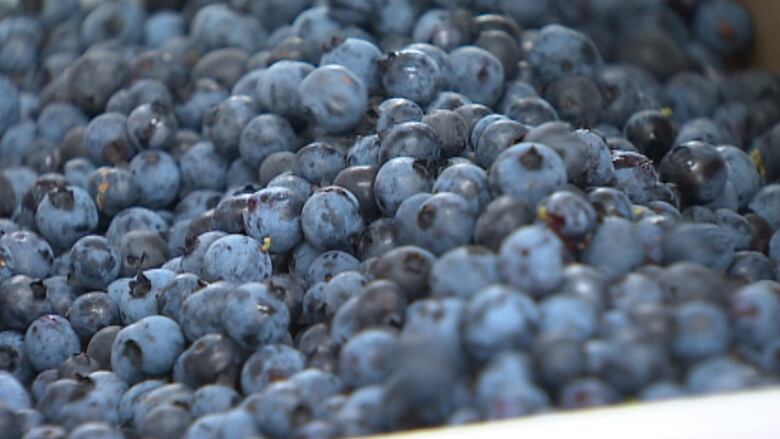P.E.I. wild blueberry growers see big crops but lower prices
Weather, low dollar, lots of berries good news, but there's an oversupply in the market

Wild blueberry growers on P.E.I. are weathering the pros and cons of bumper crops in the industry.
There's a glut of blueberries on the market north and south of the U.S. border, and that has had a dramatic effect on prices and markets.
Crops have been very good the last couple of years, but another variety is competing too, according to John Handrahan, president of the wild blueberry growers association on P.E.I.

"So we've been watching over the last few years as their planting and their production has risen, and ours is rising as well, and it's just come to the point where put together, it leaves more on the shelf right now than what the planned purchase is."
U.S. government steps in
Growers in Maine even approached the federal government there for help, and last week it stepped in to buy 30 million pounds of wild blueberries. That's good news according to Handrahan.
"It's a very positive step for the entire industry," he said. "The U.S. is still the largest market for wild blueberries, and Canada exports a lot of blueberries to the States. So if the market is not oversupplied in the U.S., that could have a very positive effect moving forward. Now it's not going to move the prices hugely, but it means that's one last factor to weigh the price down."
Wild growers were getting 70 cents a pound two years ago, but that has gone down to 50 cents, and Handrahan said indications are the price will be at that level or lower for the coming season.
As exporters, the low Canadian dollar continues to work well for the P.E.I. industry.

About 80 per cent of Canadian blueberries go to the export market.
Crops now 3x bigger
Wild blueberry crops are bigger than they were 20 years ago, thanks to a couple of major developments in the industry, including increased interest.
"It takes 10 to 15 years for wild blueberry fields to come into full production, so a lot of what was put in over the last two decades is coming into maturity now," said Handrahan. "Also, farmers are managing their fields much more intensively. There's a lot more interest in how to manage a field for optimum production."
A field that 20 years ago was producing 2,000 to 3,000 lbs of wild blueberries per acre, is in some cases seeing 9,000 lbs per acre or more.

"Not a whole lot of winter injury, it seems like the little buds have come through the winter in pretty good condition," said Handrahan. "We have to get through the spring frost seeing, there's a few other key points including the pollination season, that things can be less than optimum."
The bee supply also seems good, he said, after an expansion of the beekeeping industry on P.E.I. when honey bee importation rules were relaxed in 2012.
With files from Island Morning